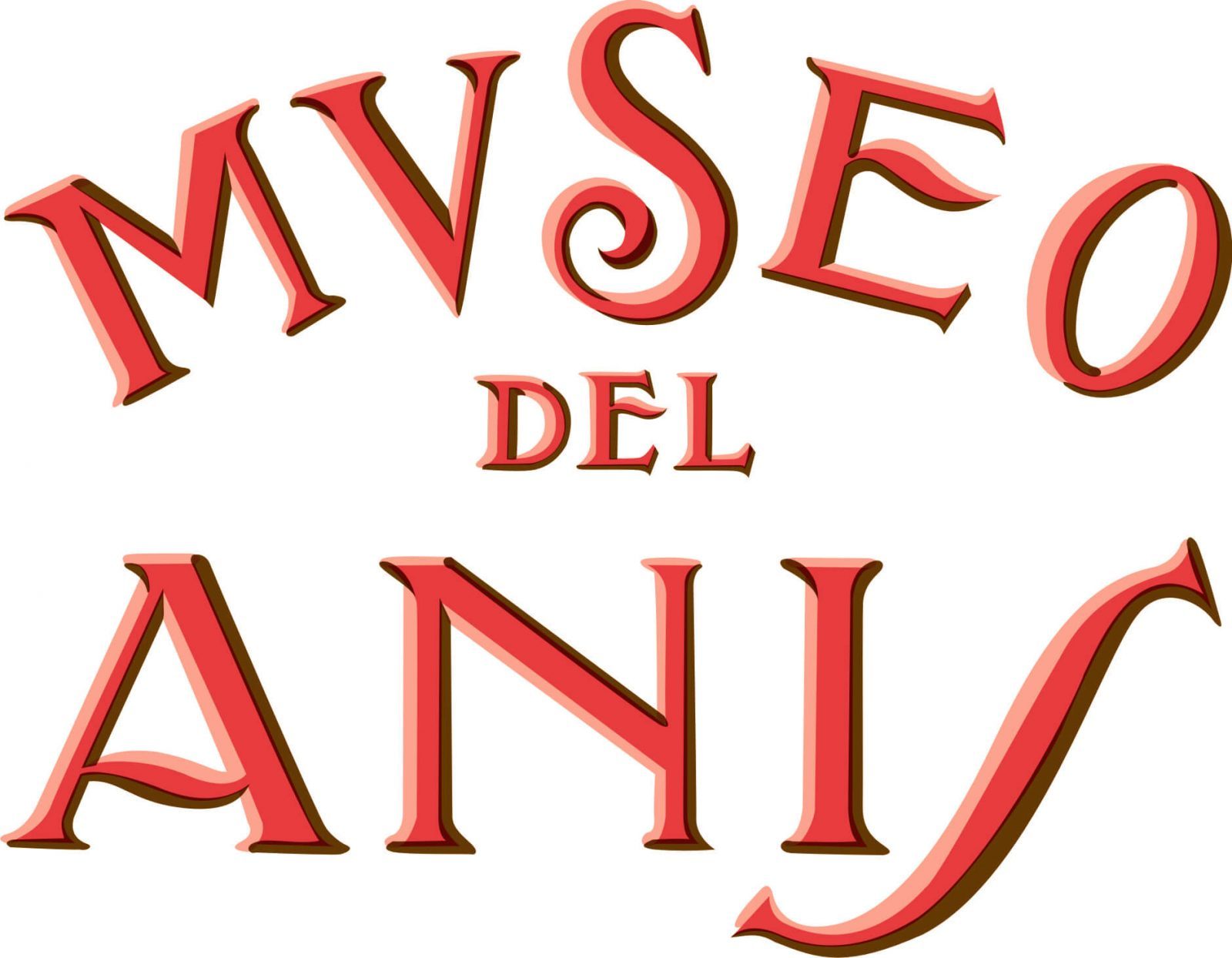
Anise Museum
The Anisette Museum is located in the Paseo del Fresno (Rute), inside the Sierra Subbetica Natural Park in Cordoba. It is known worldwide as “The Anisette Town of Spain”. The tradition of this tourist enclave goes back centuries to the distillation of eau-de-vie and anisette.
A stroll through the rooms of the Rute Anisette Museum
The museum has different rooms that offer a unique route and a special visit.
Alembic Stills Room
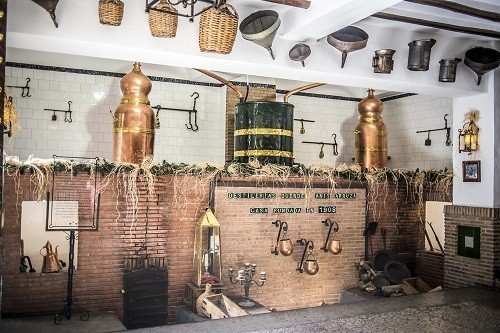
Originating from distillation in the early 20th century.
It consists of 2 copper stills with a unique design that offer one of the differentiating characteristics of Anís de Rute from the rest of the world, gathering the secret and art of distillation that the European Parliament grants as a protected geographical denomination “Anís de Rute”.
The room also has a showcase displaying the history of the distillery.
Maceration Room
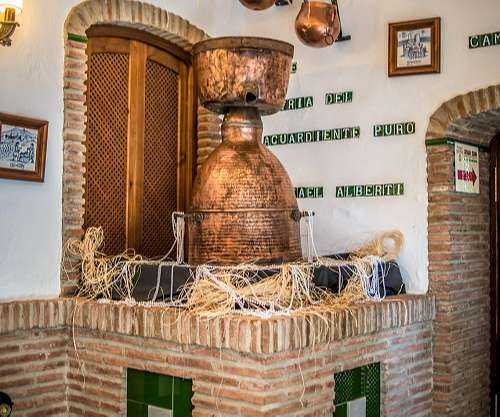
Showcases displaying bottles, documents, objects, advertising and industrial tools from companies that distilled wine spirits.
The maceration consists of leaving the fruit, coffee, aromatic plants and distilled aniseed to rest between 18º and 35º in glazed earthenware jars, which can be seen in this room.
The showcase with a very pure blue bullfighting cape with the image of “Ntrª Srª de la Fuensanta” (patron saint of Murcia) which belonged to the matador Carlos Arruza. The sky blue bullfighting dress is part of the bullfighting trousseau of his son Manolo Arruza.
Women’s Room
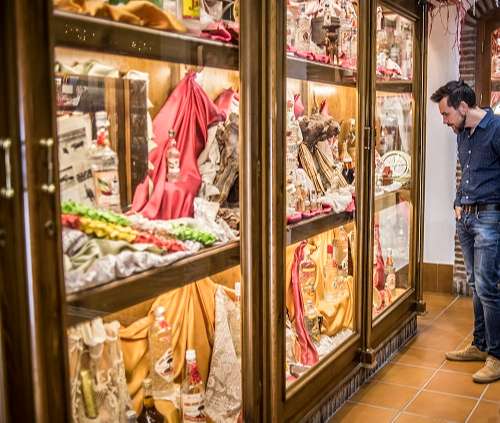
It represents the importance of women in the promotion and diffusion of anisette during the 18th to 20th centuries. Cupletistas who animated the night pubs, being Anís “La Goya” and “La Mora” and Matilde Pretel the most representative of the genre.
This room also has a showcase with several displays dedicated to special packaging for the Spanish and Belgian Royal Family, and various historical photographs of the distillery premises throughout its history..
Multi-purpose room
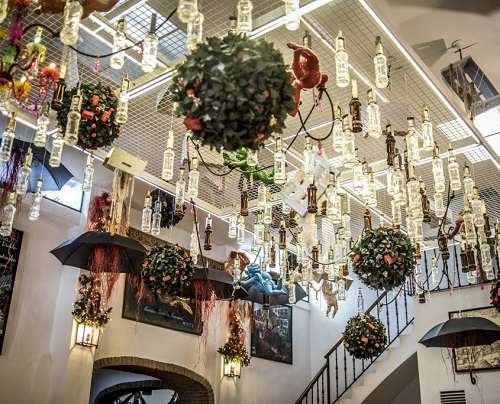
Characteristic for its decoration with old dies used to make labels and old postcards of bullfighters who gave their name to the brands of Anís de Rute and Alambique.
It was the former packaging room, now used for book presentations, museum activities, presentations of festive campaigns or meeting rooms, tastings or group tastings.
Old loading dock and factory dispatching
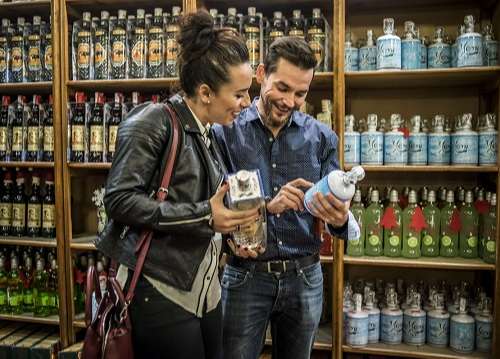
The upper part is decorated with a large contemporary art lamp called “El Cielo Ruteño”, various paintings by the artist Gonzalo Casas and contemporary panels that separate both the dock and the bathrooms.
It is the place where the Campaign “Rute, where Christmas is born” is presented, as well as book presentations and other events.
The office is used to serve customers who wish to purchase directly the historic Rute Anís Seco de 55º and Anís Dulce de 36º anisettes, distilled in the same way for centuries.
Also very popular with customers are: Anisette, Chocolate milk liqueurs, Crème brûlée or Strawberries and cream.
Classic macerated flavours such as Guindas liqueur, Pacharán or the emblem of the Rosoli liqueur shop: a surprising mixture of aniseed, lemon verbena and cinnamon. Other highlights include caramelised Vodka, herb liqueur and lemon liqueur.
And for those who don’t drink alcohol: the Mojito, the San Francisco or the Mora.
Winery and Patio with Elf
The museum is housed in the historic distillery premises.
The winery

The winery is made up of two lanes in American oak barrels where the pure wine brandy has been sleeping for years.
The many signatures of famous people are striking, and the exquisite décor lulls the visitor into an atmosphere that takes him or her through a piece of Spanish history.
The Patio with Elf
There is an oasis dating back to 1908, the Patio con Duende. An enclosure with the flavour of yesteryear, with centuries-old lemon trees, cypresses, rose bushes and carnations full of scent.
Trees and flowers are mixed with aromatic plants such as lemon verbena, mint, mint, marjoram and thyme, used to perfume the cookers of the most authentic kitchens in the south of Cordoba.
The courtyard has a pond with aquatic varieties among the papyrus, calla lilies and water lilies, surrounded by ivy and wild pennyroyal, which make the walk in the outdoor area a unique landscape.
The different rooms of the courtyard invite us to discover corners with aromas and colours that vary according to the season, and any time of the year is a good time to visit the museum.
Weddings and other events
It can be visited, although it is located outside the premises, exactly in Calle Empresaria Teresa Córdoba s/n, 50 metres from the museum. Its use is not only restricted to contemplative or photographic purposes, but it can also be used for ceremonies such as weddings, events or aperitifs for organised groups, adapted to the client’s taste so that the event is tailor-made.
Visits to the Anisette Museum in Rute
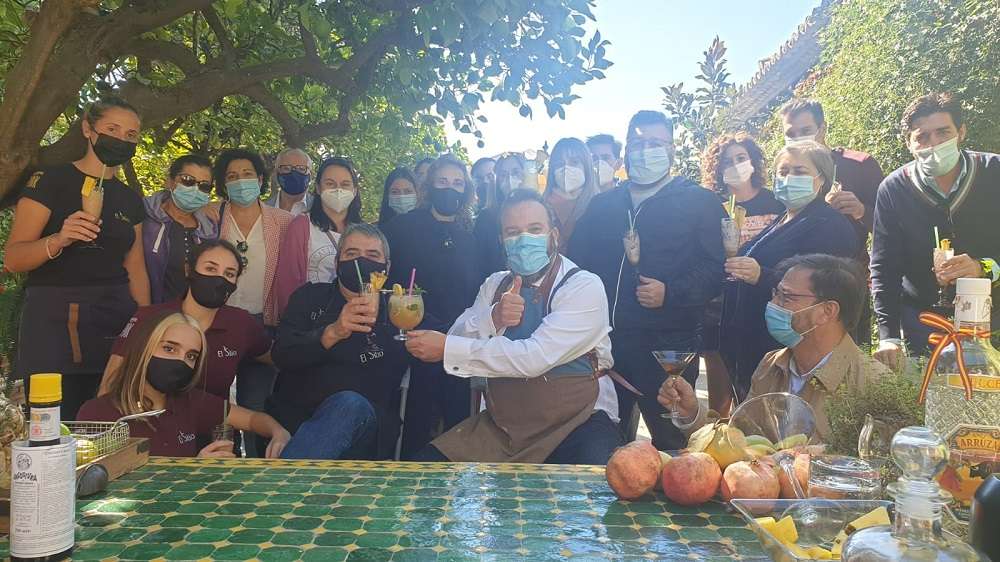
The museum offers different alternatives to visit it:
Guided tours for groups or individuals
It starts at the Paseo del Fresno with a sensory visit to discover the brandy cellar, an original building dating from 1908. It continues in the Patio con Duende and from there to the distillery. Afterwards, through the maceration room offering a small glass to taste the liqueurs while you contemplate the display cases. The tour ends with a visit to the factory office, where you can buy a souvenir.
Visit with assisted tasting, aperitifs or sweets
It follows the parameters and script of the previous visit, but also offers an aperitif, brunch or lunch for groups by reservation.
School visits to the museum
Aimed at minors and restricted to the galleries registered in the Andalusian Museum Register. It consists of a didactic class through its different rooms and with a clear message of zero tolerance “0” to underage consumption.
Renting or leasing of rooms
For all those who want to celebrate their wedding ceremony, christening, communion or any other family or work event in the museum’s facilities. To guarantee the success of the event, the Anis Museum has complementary catering, lighting, decoration and sound companies.
Origins of the Anisette Museum
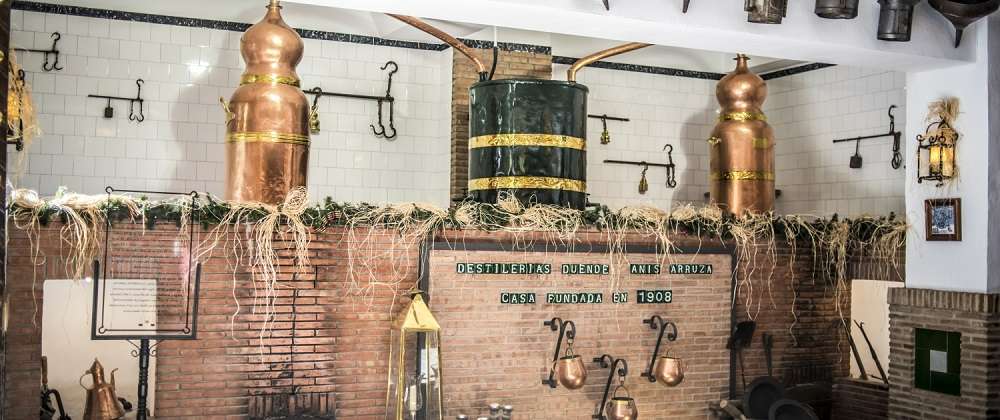
The Anisette Museum is an entity under the auspices of “Destilerías Duende”, which dates back to 1908 and still preserves the original building.
It houses different rooms with objects related to distillation, old machinery, earthenware jars, copper stills, 738 inventoried pieces that symbolise a journey from pure wine spirits from the 17th to the 21st century, to the current anisettes. The museum takes you back in time through the showcases of many distilleries.
Since 1993, the Museo del Anís and the Destilería Duende have been under the direction of Anselmo Córdoba Aguilera.
The essence of anise comes from an umbelliferous herb with white flowers and ovoid fruits. It came to the peninsula thanks to the Arabs and they gave it the name of “tornamaridos”, as it restored the husbands of women with bad breath. The grains were used in Al-Andalus in sweets, syrups, pharmacies and liqueurs as a condiment.
On the website you can see the numerous awards and recognitions that the museum has obtained over the years. The website also has a link to go directly to the shop “Destilerías Duendes” and see all the products available and make your purchase if you wish.
